Digital Violin
updated, as and when
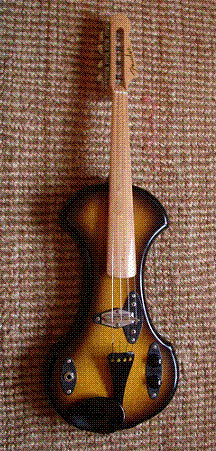
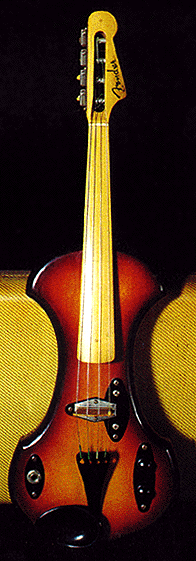
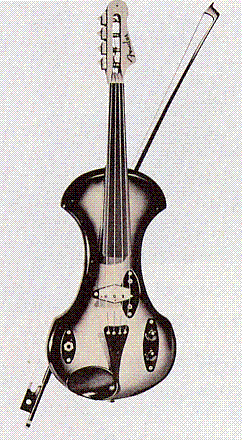
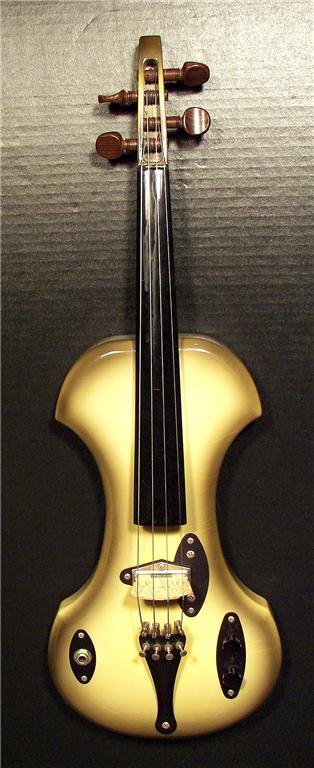
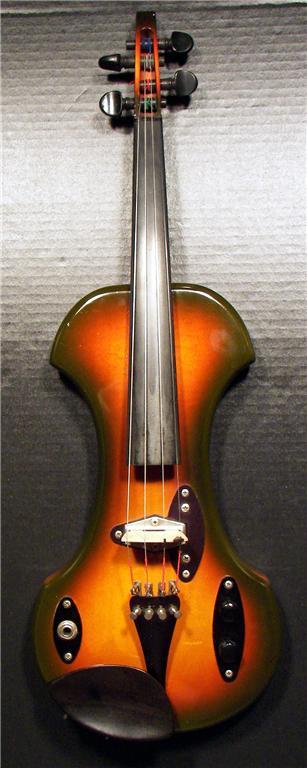
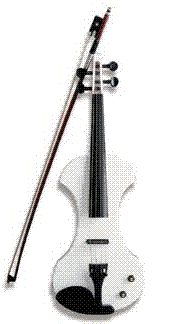
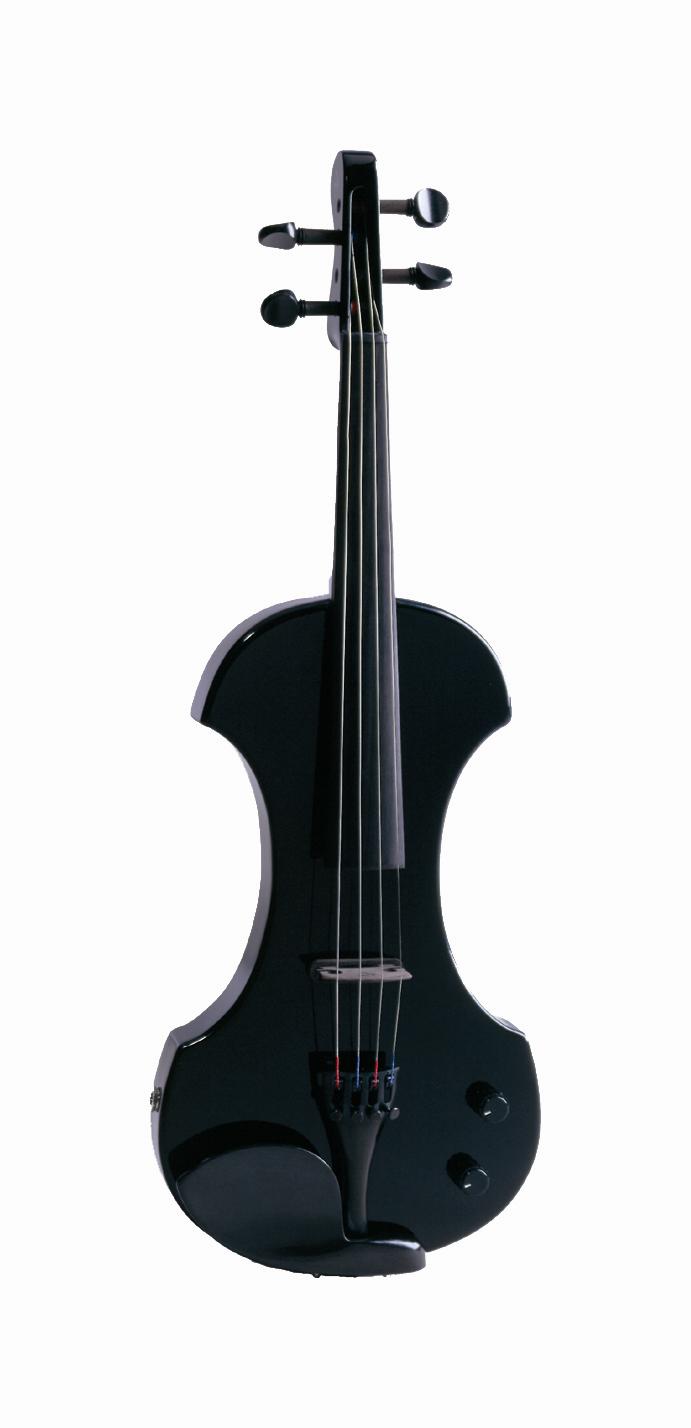
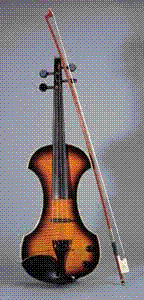
The Fender Violin
Certainly, Leo Fender was thinking about creating an electric violin as early as 1948. He planned to complete a set of electric stringed instruments - including guitar, bass, mandolin and violin. Sources record that a template for the violin neck with headstock was in existence some years before the finished instrument emerged. Development started, but the Fender electric violin project took until 1958 to fully realise.

Leo Fender filed an application for an "electric violin, and electromagnetic pickup therefore" on 2 June, 1958. Later, on 10 April, 1959 he made a second application for an "electric violin body" design. Whatever people may have thought about Leo's electric violin then, they had no idea just how particularly the body design would ultimately catch on. Yet, the electric pickup method would vanish into near total obscurity. As with the similarity between the 1930 Makhonine electric violin and the Yamaha Silent Violin; Fender's original electric violin design can be found in a number of popular electric violins today.
Details and pictures of these first Fender violins are found in only a few books. Despite the almost mere mention in the following, these are seemingly the main sources of information as to the existence of a Fender violin:
- "Fender - the Inside Story" (1994, pg.108) by Forrest White
- "Gruhn's Guide to Vintage Guitars" (1999, 2nd ed. pg.97) by George Gruhn and Walter Carter
- "50 Years of Fender" (2000, pg.26) by Tony Bacon
- "Fender - the Sound Heard 'Round the World" (2003, pg.180) by Richard R. Smith
From these sources it is found that the first production model Fender electric violin had a two-colour sunburst finish and was debuted at the WSM convention in Nashville, October 1958. Amongst others Roy Acuff, Tommy Jackson and Howdy Forrester tried it backstage and gave their opinions. Wade Ray and Harold Hensley are two of the only known "fiddle" players who played these instruments regularly.
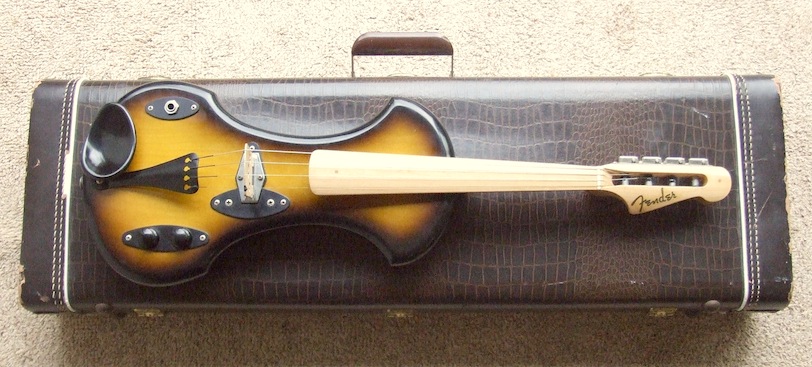
Leo Fender used a bolt-on maple neck, a Fender-style headstock with geared Kluson tuners. The body was made from maple and was hollow, with a top constructed from 1/8-inch plywood, featuring exaggerated body waists. The pickup device was internal and was Fender's own invention. It utilises a novel method of causing flux in a single-coil electro-magentic pickup which, whilst being a progressive development from the Beauchamp Electro, the mechanics of this pick up is similar to the devices found on the acoustic Horn violin by Stroh. Currently, however there are no instruments on the market that employ this method of pickup or design. The paint department at Fender finished these first Fender violins in both two and three-colour sunbursts.
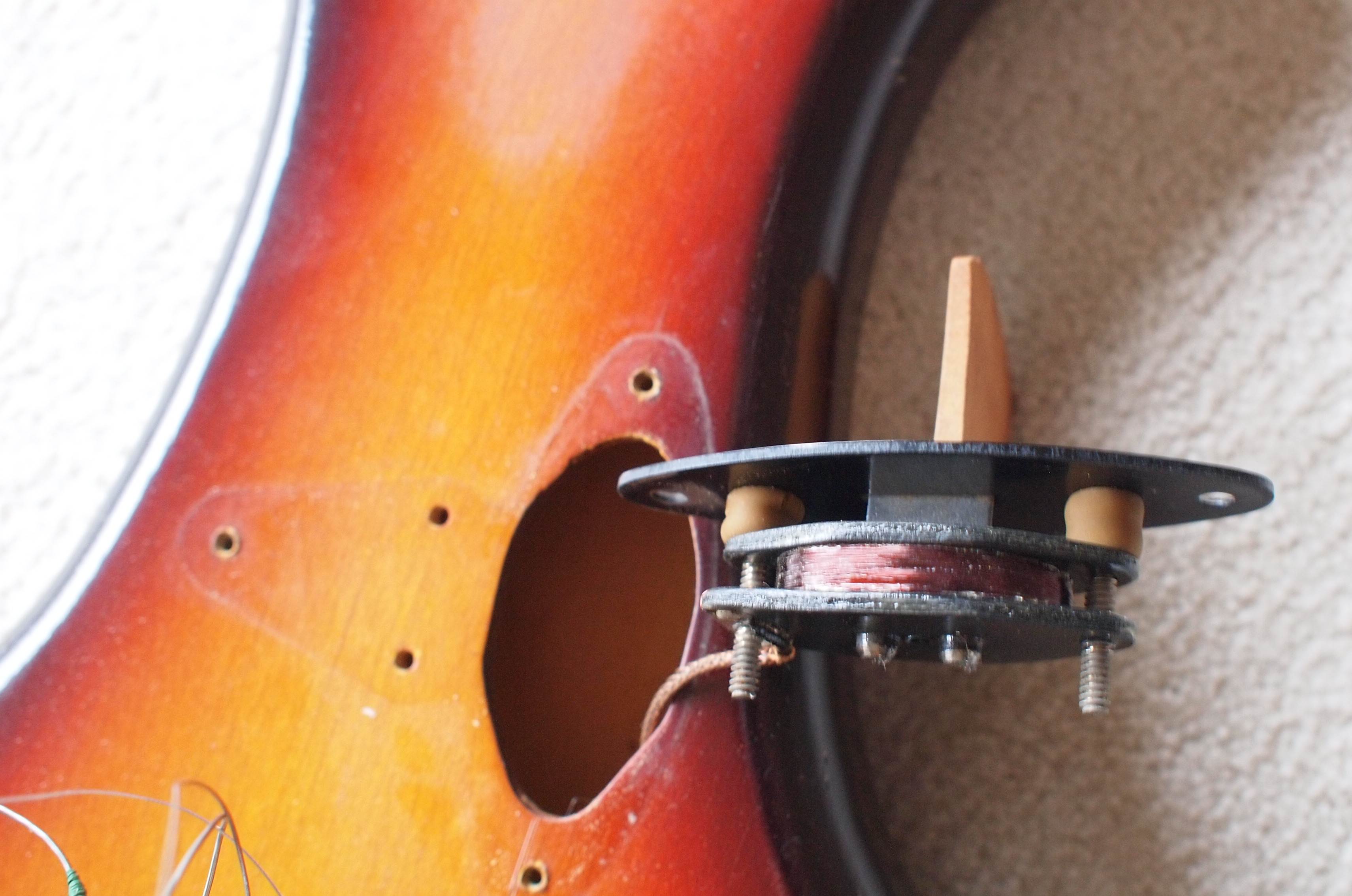
From surviving examples of these violins we can learn how this pickup device works in transferring physical vibration of strings into electrical flux: The strings are made to vibrate and just as with the acoustic violin the bridge is thus set in to a rocking motion. This motion directly causes the metal pad it sits on to vibrate, and through the design and material of the pad this vibration creates disturbance in a magnetic field surrounding two pole pieces in a single coil pick up. The pad, or armature as it is called in the patent specification is held a distance from the pole ends. The exact and desired distance is stated to be "more than 1/32 of an inch, and is preferably about 1/64 of an inch" There is then a similarity between this pickup device and a spark-plug in a car engine. Adjusting the size of the gap has a profound effect on the strength of output electrical signal. It is a very elegant solution and one which remains very much unexplored today.
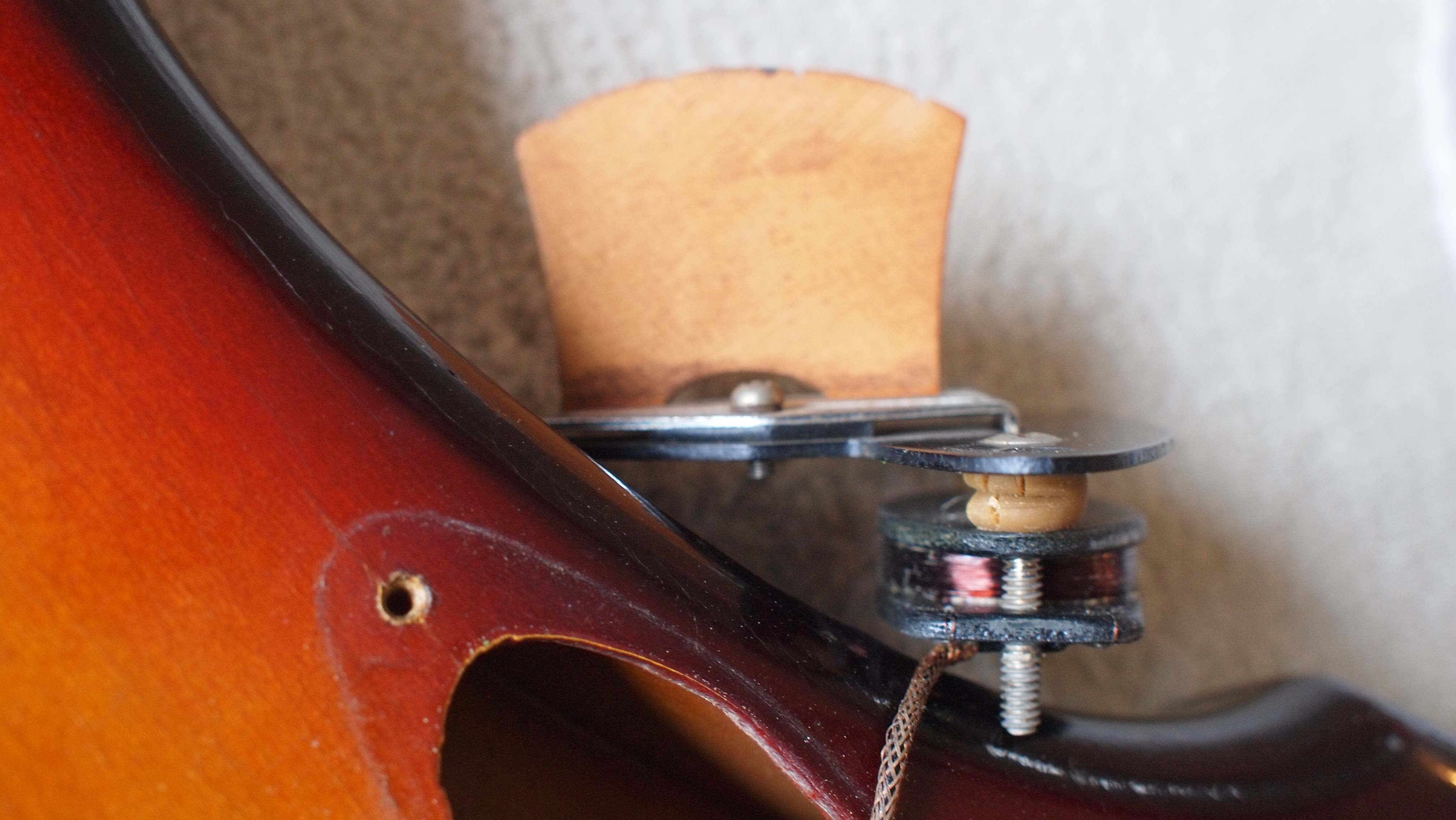
Consider the fact that as recent as May 2005, one of the world's leading specialists in the area of Vintage electric musical instruments had only ever seen two examples of this instrument in over 40 years. Also, the leading auction houses Sotherbys, Christies and Bonhams had never had one of these instruments pass through their sales. And finally, consider the possibility that it is not known exactly how many of these violins were ever made... In 2010 an example of the three-colour sunburst was sold at Christies. In 2012, this instrument was sold through the New York String Service
The following comes from a copy of a 1958 advertisment.
"The instrument is beautifully made of choice grained woods, finished in Sunburst and fitted with chinrest, fine-tune patent heads and bridge. Leading violinists who have played the new Fender Electric Violin acclaim the advancement in amplified violin qualities represented by this instrument. It is an instrument with beauty of tone, beauty of design and one which will satisfy the most discriminating violinist. It opens an entirely new field and is the answer to every violinist's desire for an instrument possessing the refinements and tone characteristics of violin amplification."
Neither version 1 or 2, were commercially successful. Seemingly Leo Fender was very disenchanted by the complaints levelled at these violins. The lasting impression is that these violins were too heavy. He actually seemed to give up on the project. Two orders for 100 violins each, are recorded as accepted but only three or four instruments have ever really been seen since. It isn't known whether all the orders were completed.
Speculation as to whether the orders were actually made is raised due to the possibility that unused parts from version 1 and 2 were used in the manufacture of a third version. Rare, unassembled "pick-up" and "control" parts have been found for sale via the Internet.
Nonetheless, despite the commercial failure, on 25 October, 1960 Fender was granted a Patent for his electric violin body design. The following year, on 10 October, Fender was also granted a Patent for his electric violin with pickup device. In doing so the Fender electric violin was saved from complete obscurity and was to prove Leo right after all. Todays electric violins - whether the mass marketed Japanese models by Yamada and Yamaha or the more specialist hand-crafted instruments by Zeta or Bridge (amongst many others) all use design features or the technology invented by Leo nearly half a century earlier.
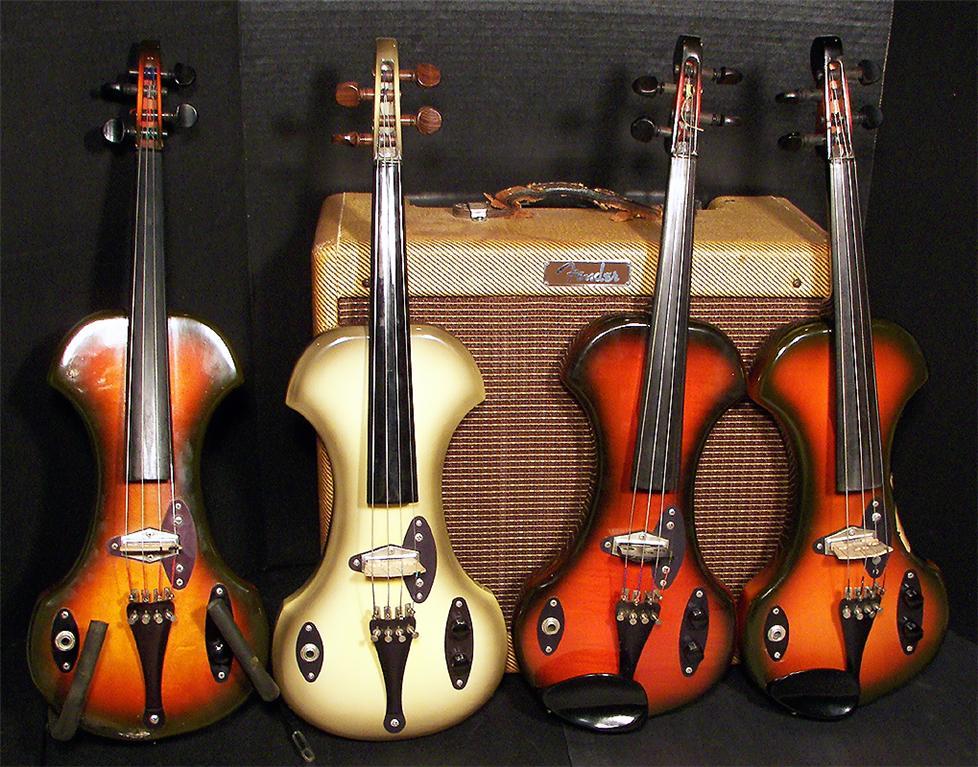
1969-1976
By this point in Leo Fender's life, CBS were now in charge of the Fender name. The company had been sold to CBS for some $13 million (about ?40million in todays monetary terms). Leo had no further hand in the development of what is known today as the Fender Violin. The design was changed slightly, principally the headstock replaced with a more traditional, but a simplified, "backwards" facing scroll, almost identical to Beauchamp's 2nd Electro violin. The instrument came with a one year Warranty and a small instruction booklet.
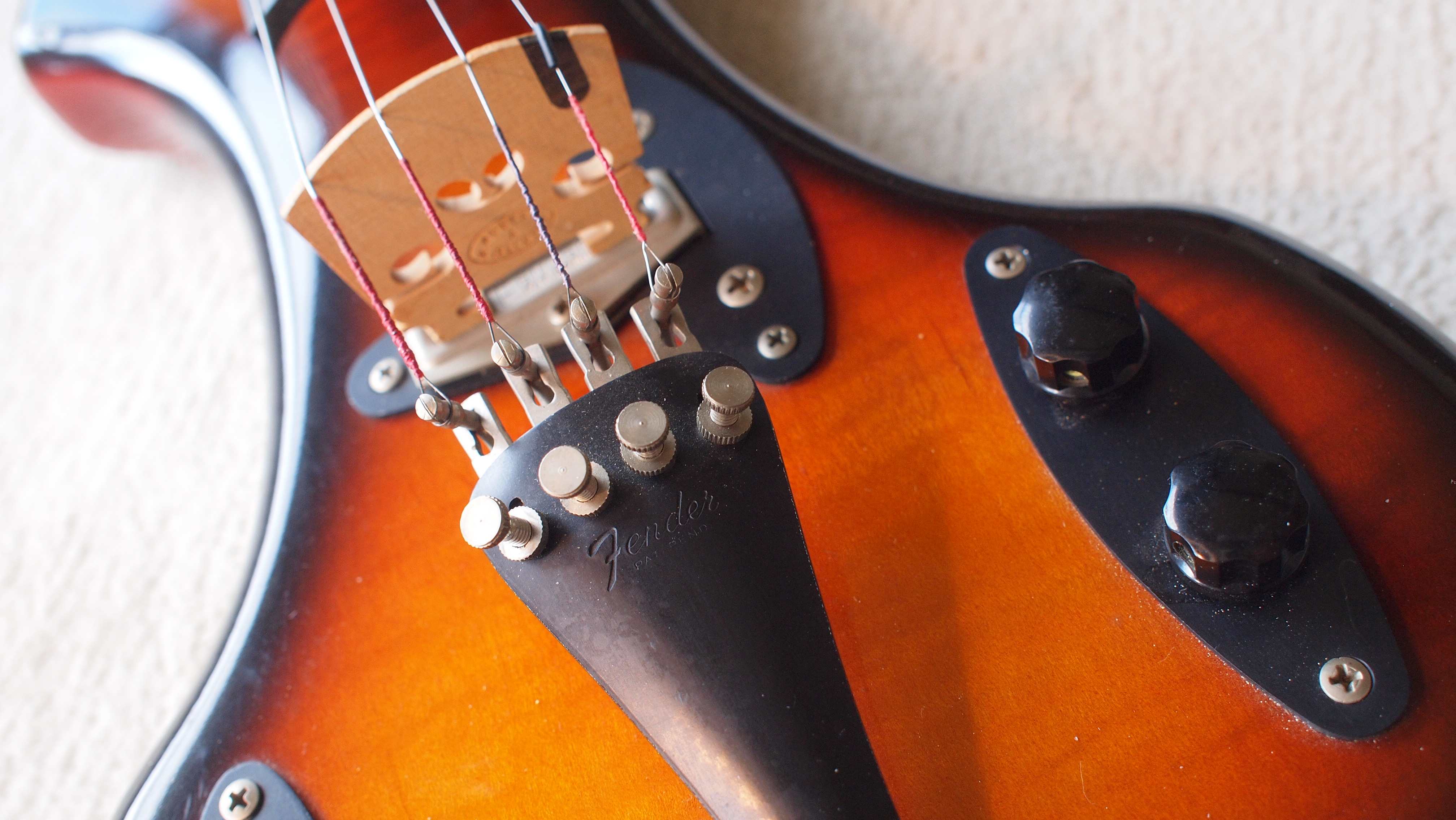
Although this third version sold more units than previously, the life span was brief. It would be more than 20 years before the Fender electric violin appeared again. To date only a few version 3 instruments have come up for sale on the general market. Only eight instruments have been noted for sale via the Internet. They have usually been priced at around ?5-800, depending on condition.
No information has been found regarding any design variations to version 3, or any indication as to how many were ever sold.
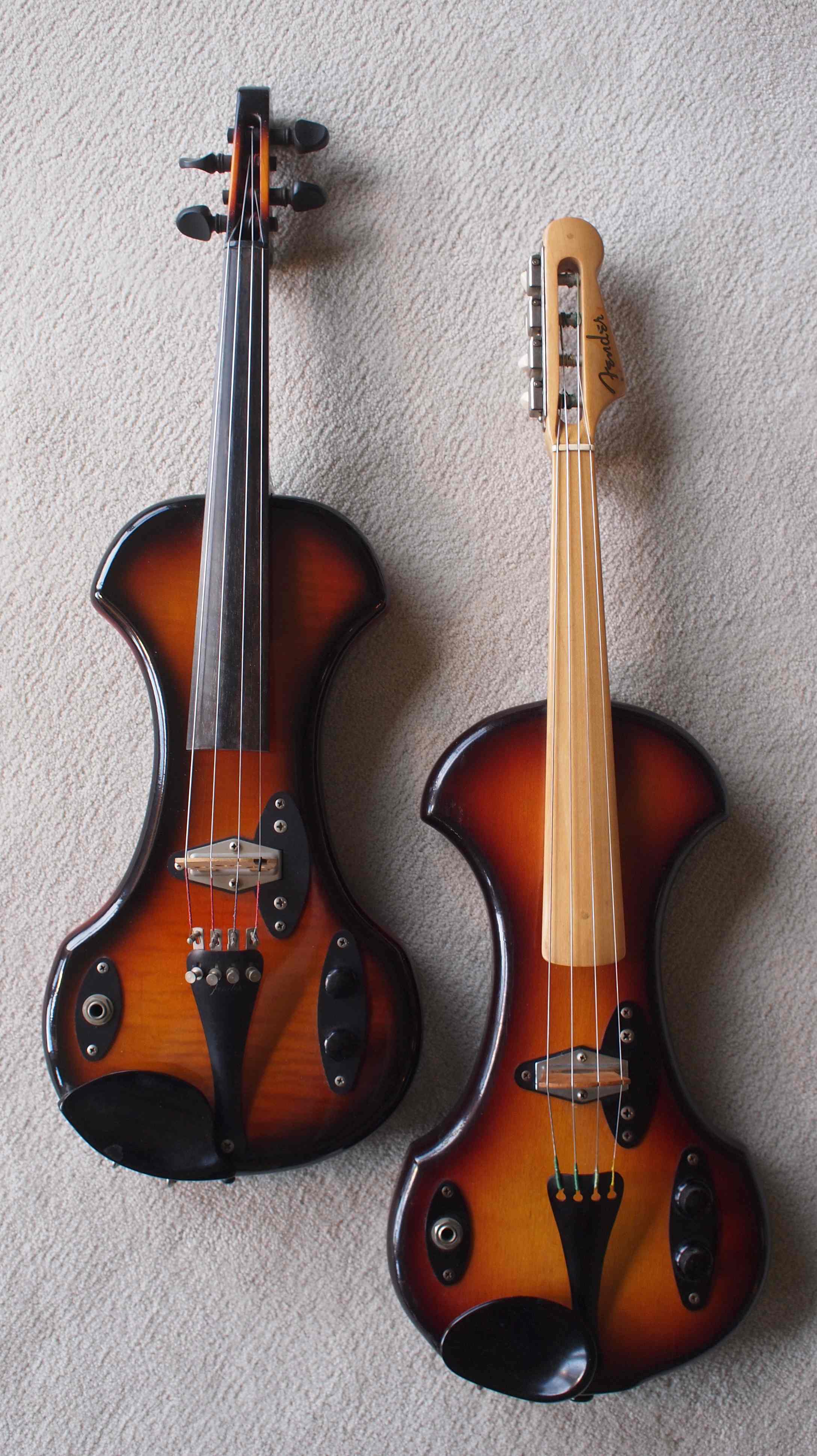
1976-1999 - Manufacture of Fender Violins stops.
During this period CBS sold Fender to a group headed by Bill Shultz (formerly of Yamaha), which incorporated as Fender Musical Instruments Corp.
since 1999
The new Fender Company re-launched an electric violin with the FV-1 and FV-3. These appear to be good sellers. They are described in adverts as having all the tone, playability and features that musicians have come to expect from Fender. And as featuring a chambered body, solid spruce or maple top, maple back & sides, ebony fingerboard and special design piezo electric bridge with volume and tone control. Available in Black and Polar White (FV-1) or "flame" (FV-3).
When Leo Fender sold-up in 1965 to CBS the violin changed. Leo's inventions are referred to being "pre-CBS". Version 3 are known as CBS-Fender violins. Strictly speaking version 4 should be known as post-CBS Fender violins.
The current version is a different instrument primarily as the pick-up device has been replaced by a piezo electric ebony bridge. In this sense there can be no direct comparison made between all versions. The original version is an instrument with a great response and the broadest of tonal effects. The harmonics are clear and beautifully soft and the instrument plays uniformly across its range. It has a surprisingly good dynamic when played without electrical amplification, suitable even for a very intimate performance.
Modern technological advances have given access to super-small sized components providing on board amplification; the means to register a vibration and effectively shape it. Knowledge of resonant materials, their properties and desire for a naturally amplified sound being a part of what makes a violin governs all types of violins today. Leo is an acclaimed maker. His brilliance is plain and obvious. He aimed to make musical instruments for musicians to make music with, and he did. Leo Fender's original Electric Violin should be seen and understood as the bridge between the earliest experiments (successes and failures) to the rapidly growing market for electric violins today...

This work is licensed under a Creative Commons Attribution-NonCommercial-NoDerivs 2.5 License.
up










